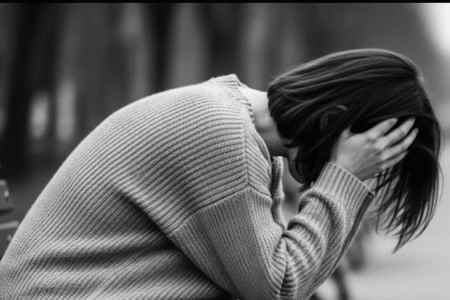In Part 1, we opened the door to understanding mental illness by challenging stigma, exploring its impact, and urging early awareness. Now, in Part 2, we step deeper into the world of mental health — exploring the types of mental illnesses, their hidden presence in daily life, and the critical need for treatment and support. Each story of mental illness is unique, yet many share similar patterns that often go unnoticed. Understanding these nuances can help us become more empathetic, informed, and supportive as a society. Mental illnesses are not one-size-fits-all. They range from mild disruptions in mood or thinking to severe conditions that drastically impact everyday functioning. Broadly, mental disorders fall into categories like mood disorders, anxiety disorders, psychotic disorders, eating disorders, and personality disorders. Among the most common is depression, which can bring overwhelming feelings of sadness, fatigue, hopelessness, and even physical pain. Then there’s anxiety, which is more than just nervousness — it’s a persistent fear or dread that can make even simple tasks feel impossible. Bipolar disorder causes intense mood swings, from emotional highs (mania) to crushing lows (depression), while schizophrenia involves hallucinations, delusions, and a distorted sense of reality. Obsessive-compulsive disorder (OCD) and post-traumatic stress disorder (PTSD) also fall into this complex web, each with its own triggers, symptoms, and challenges. These conditions don’t always show themselves clearly. In fact, mental illness is often hidden in plain sight. A student who is always anxious about failure, a colleague who seems unusually withdrawn, or a loved one who jokes about being tired all the time — these may be quiet cries for help. Unfortunately, our fast-paced lifestyles and societal expectations can discourage people from pausing to acknowledge these signs. We’re taught to “keep going,” to “stay strong,” to “not overthink” — phrases that, while well-intentioned, often invalidate the very real struggles people face internally. Adding to this complexity is the influence of society and culture on how mental illness is viewed. In many cultures, mental health remains a taboo subject. Admitting to a mental health condition is often equated with being “weak” or “unstable,” making individuals reluctant to seek help. Some families may deny the presence of a disorder altogether, dismissing it as a phase, laziness, or drama. In workplaces, the pressure to appear “professional” often discourages people from speaking up about burnout or emotional exhaustion. This silence and shame can delay treatment, worsen symptoms, and sometimes lead to tragic outcomes. But here’s what we must remember — help is available, and healing is possible. Treatment options for mental illness are more diverse and accessible than ever. These include therapy, counseling, medication, support groups, lifestyle changes, and more recently, online mental health platforms. Therapists and mental health professionals are trained to create safe, non-judgmental spaces where individuals can explore their thoughts and emotions. Contrary to popular belief, therapy is not just for people in crisis — it’s for anyone who wants to understand themselves better, improve coping strategies, and live a more balanced life. The journey to recovery may not be linear. There may be relapses, moments of doubt, and emotional setbacks. But with the right support system — friends who listen, families that understand, workplaces that care, and professionals who guide — it becomes easier to manage and live fully. Mental illness doesn’t have to define who someone is; it is simply one part of their human experience. In the next part of this series, we will focus on how you can support someone living with mental illness — what to say, what not to say, how to truly be there, and why even small acts of kindness can be life-changing. We’ll also explore how to build a mentally healthy environment at home, in schools, and at workplaces. Because the fight against mental illness isn’t just personal — it’s collective. We often wonder what to do when someone we care about is struggling — Do I say something? Should I give them space? What if I make it worse? These questions can feel overwhelming, and many of us stay silent out of fear of saying the wrong thing. But silence can sometimes speak louder than words. In Part 3, we’ll unlock the emotional toolkit everyone needs — how to offer real support, how to be a safe space, and how your words, actions, or even quiet presence might be the one thing that changes someone’s life. What does it truly mean to “be there” for someone battling a storm you can’t see? The answers may surprise you. So keep reading FORAMZ.
Mental illness is one of the most misunderstood and overlooked health issues in society today. Despite growing conversations around mental health, many people still shy away from discussing their struggles, fearing judgment or misunderstanding. In a world that often prioritizes physical health and outward success, the inner battles people face remain hidden. But the truth is, mental health is just as important as physical health, and it’s time we break the silence surrounding it. Mental illness refers to a range of mental health conditions that affect mood, thinking, and behavior. These include common disorders like depression and anxiety, as well as more complex conditions such as bipolar disorder, schizophrenia, and post-traumatic stress disorder (PTSD). Each individual’s experience with mental illness is unique, with some needing short-term support, while others may require lifelong care and understanding. What’s important to remember is that mental illness is not a choice, a phase, or a weakness — it is a legitimate health condition that deserves compassion and proper treatment. The need to address mental health has never been more urgent. According to the World Health Organization, one in every eight people globally is living with a mental disorder. This number has been rising steadily, especially in the aftermath of the COVID-19 pandemic, which brought with it a wave of anxiety, loneliness, and emotional exhaustion. Children, teenagers, working professionals, and even the elderly — no age group has been spared. Unfortunately, even with such alarming statistics, awareness and access to help remain limited, and societal stigma continues to silence those who need support the most. Recognizing the signs of mental illness is the first step toward healing. Warning signs can include persistent sadness, withdrawal from social activities, drastic mood changes, sleep disturbances, overwhelming anxiety or fear, and trouble concentrating. In more serious cases, individuals may even experience thoughts of self-harm or suicide. These signs should never be ignored or brushed aside as “just a bad day” or “attention-seeking.” Just like we rush to help someone with a physical injury, the same urgency must apply to mental health crises. Perhaps the most harmful myth is that mental illness reflects personal weakness or failure. Nothing could be further from the truth. Mental health conditions often arise due to a complex mix of genetics, environmental factors, trauma, and brain chemistry. No one chooses to struggle, just like no one chooses to fall physically ill. What people battling mental illness need is not pity or advice, but empathy, understanding, and support. They need safe spaces to open up without fear of being judged. Mental illness doesn’t always look the way we expect it to. Sometimes it wears a smile in public and cries behind closed doors. It can be hidden in high achievers, busy parents, quiet teenagers, or even the friend who’s always making everyone laugh. This invisibility is what makes awareness so crucial because people often suffer in silence, even when surrounded by others. In the next part of this series, we’ll uncover how these hidden struggles manifest, the different forms they take, and why understanding them is key to creating a more compassionate and mentally healthy society. As we begin to peel back the layers of what mental illness truly means, one thing becomes clear — there’s so much more beneath the surface. Why do certain disorders go undiagnosed for years? What roles do culture, upbringing, and media play in shaping our beliefs about mental health? And most importantly, what does healing really look like in today’s fast-paced, hyperconnected world? In Part 2, we’ll dive deeper into the types of mental illnesses, how they silently affect daily life, and why seeking help is both brave and necessary. Stay with us — the conversation is just getting started. For more interesting content, keep reading FORAMZ.


